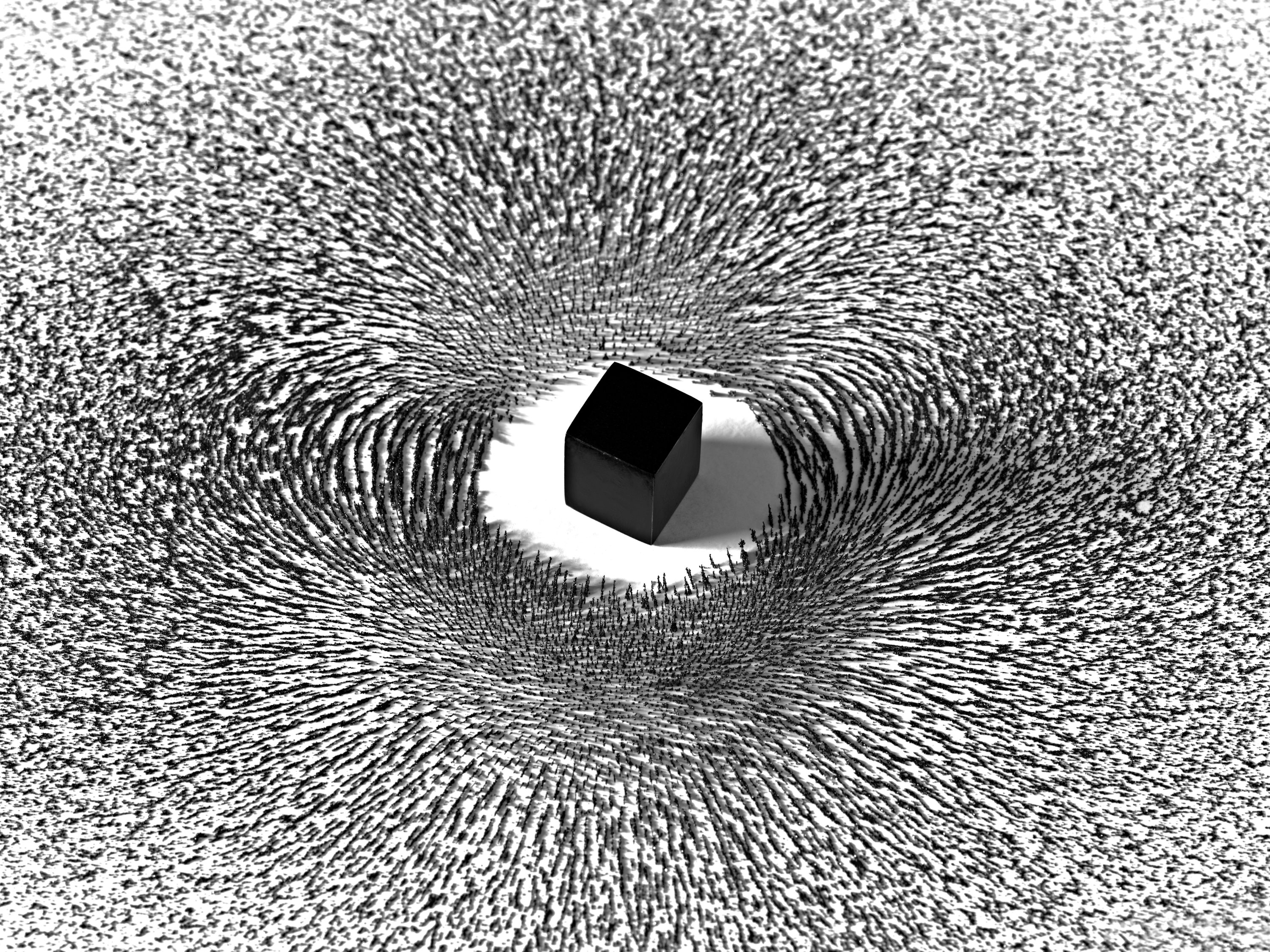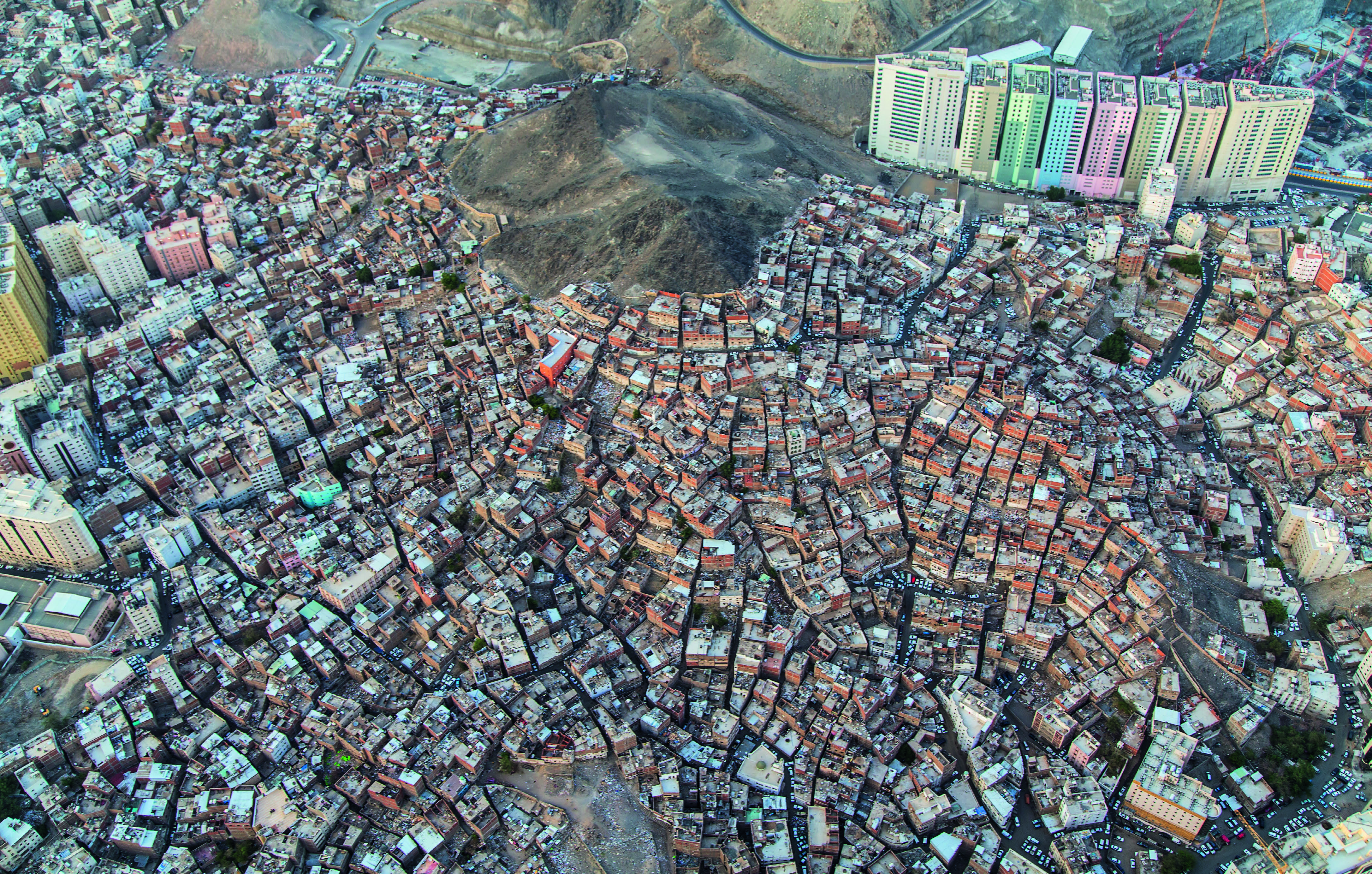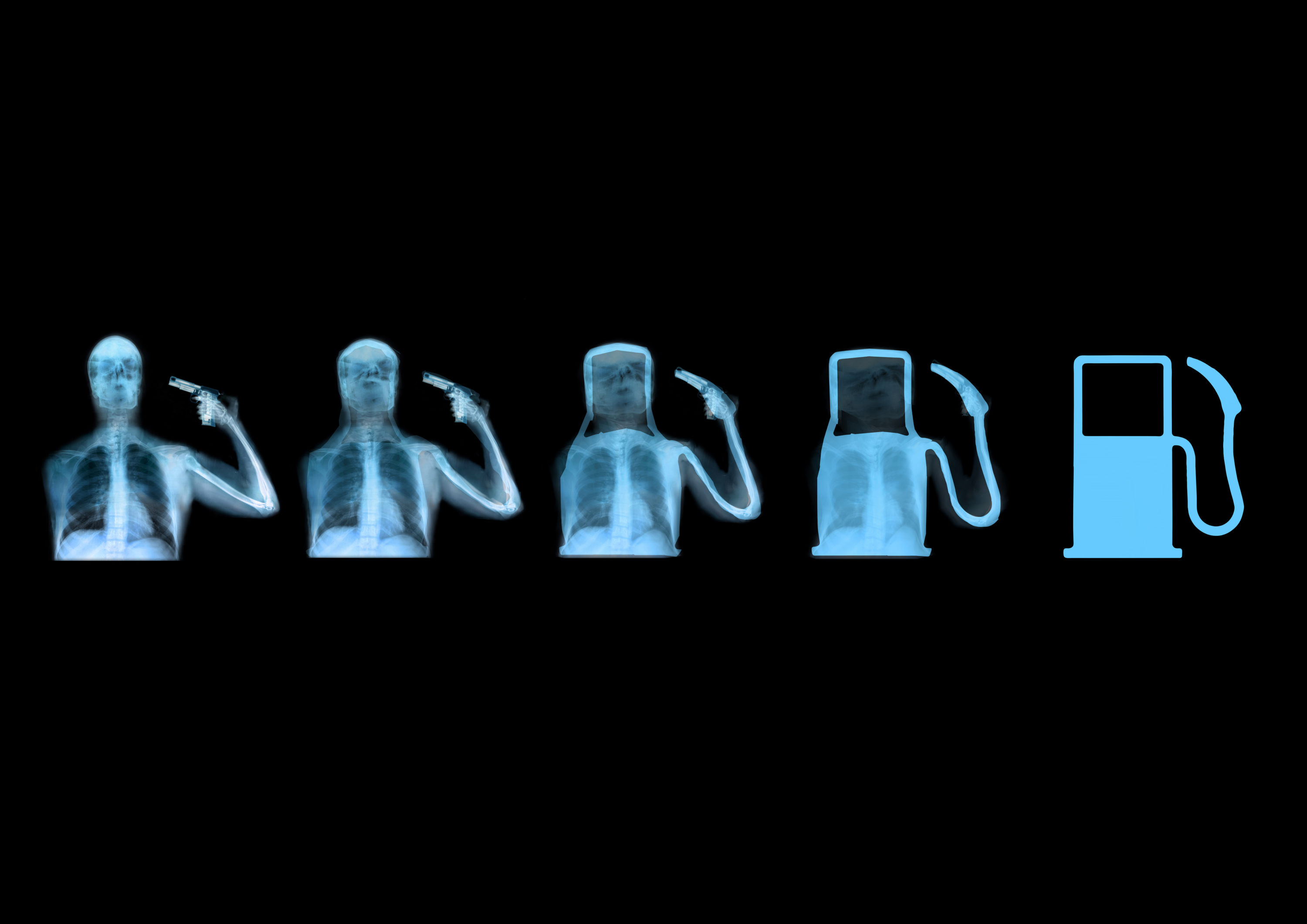Deep Focus
The Most Public of Private Spaces
I find it interesting to think about the word public in the context of Mecca—the subject of my most recent body of work. The word represents something bare, exposing elements of oneself or one’s community to be interpreted (or misinterpreted), bringing the state of being public to the public’s attention. A few years ago, I started a project about Mecca called Desert of Pharan, an exercise of thought that began intuitively and compulsively, a continuation of a narrative that runs through all my work. Formulated as a series, Desert of Pharan has been published in a volume in a public forum. Perhaps my work is about the public as an organism: a living and breathing creature that informs and creates, denies and destroys.
This creature, this mythic beautiful and majestic dragon, with its scales tiled one upon the other, has filled the images of my work. It has appeared as lead filaments, bowed down to the magnet that draws them close, as a mass of figures bathed in white cloth, moving as one around the Ka’aba, the building at the center of the Great Mosque of Mecca. The work is not religious; it is the embodiment of two words that symbolize a polarity, a push and pull, the public and space. How can one find private space within the public? And how can the public find a form for its space? This cause and effect, a pull between the desire to commune and the reality of eternal solitude, sits at the heart of Mecca.

Ahmed Mater. Magnetism IV, 2012. Diasec mounted Lightjet print on Kodak Premier paper; 180 × 240 cm. Courtesy of the artist.
The Ka’aba is like a black hole. It draws us into dimensions that our consciousness cannot fathom. It represents another plane of understanding. Upright, at the center of the circling pilgrims dressed in white ihram, it draws them nearer, tightening the spiral, bringing them closer, transforming each from a singular to a plural to a singular again—to a public. This circling process, or tawaf, propels you—carried by the public, now a people, then a community, permeated by a persistent elation, fulfills a peaceful formation so as not to become a stampede.
Mecca has no permanent physical structures. The demolitions and reconfigurations occur on the surface. There is no commitment to these high-rise, five-star, air-conditioned structures. Stone, mortar, brick, cement, blood, and sweat have solidified them, but, just as the city has recently been redrawn, so it might as readily be taken down again. There is no permanence in Mecca, save the original site of the gathering of the pilgrims, the public. In Islamic culture, the notion of public spaces in which to meditate—taking form in other cultures as temples or churches or the secular contemplative spaces of galleries or museums—was originally articulated as a wall-less form. Public space was delineated simply by the desire for people to congregate, bounded by imaginary walls. This practice of congregation extends within Islamic culture to the majlis, which literally means “a place of sitting,” yet invokes public, ceremonial, domestic, and formal gatherings. This practice of informal, structured arrangement—of seating, of place making, of circling around a central location—happens in public and in private. I believe the more imaginative formation of millions, who each year visit the site of Mecca, will remain as both a (non)physical and symbolic mediation.
This attitude toward the public—at once a release of self-consciousness and an abandonment of individuality, as well as a reconnection with one’s psyche—that is found in Islam and is located physically, socially, and politically within Saudi Arabia, is unique. It cannot be replicated, and it feeds or is fed from the satellites within the kingdom. My work, like this attitude, is based on satellites of thought. My work 100 Found Objects is composed of pieces found on the site of Mecca during its demolition; it also extends to broader, more political, and international meanings. Are we humans not a public, and is our world, this island within a universe, not a public space? Recognizing interrelations and practicing an openness of thought can allow histories to be rewritten. The collection of 100 Found Objects sits within a narrative—fictional, truthful, archived, rediscovered—that questions our understanding of public truth and in turn our public space for thought. The notion of public space as defined by physical boundaries is countered by that formed by public thought and conversation.
Saudi life has seen dramatic changes over the past ten years. How we express what we think within public space has been a point of contention, involving risk and spurring international outcry. What happens to us Saudi Arabians within these intangible public spaces and how we are viewed as one vein of a human public are preoccupations of my generation and in turn of my work. (One of my earlier pieces, Evolution of Man, addresses such self-reflective recognitions.)
In my work, I am channeling the vision that I use to conceive new videos and installations toward a social project; it is a return to a role similar to that of a community doctor. My process of making art is the examination of my public; the exhibition is a proposed diagnosis; my work with the Misk Art Institute, in some ways, is prescriptive. Instead of making art for public spaces, I use public spaces to inform my art. I hope to challenge the notion of “public space,” not only in Saudi Arabia but also international locations. This has the potential to do something differently: to think through not only public space but also a space with a public, a people, and what that space means within our current context. What is its potential, within this new territory, for a public and for a people?
Ahmed Mater: Mecca Journeys is on view at the Brooklyn Museum through June 17, 2018.




